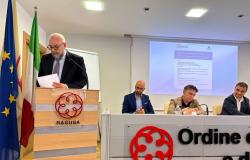June 2, 1946, the Italians choose to make Italy a Republic after 85 years of the reign of the Savoy, twenty of which passed under the fascist dictatorship. Even in the Legnano area, 78 years ago two out of three citizens chose the Republic: using data from the historical archive of the Ministry of the Interior LegnanoNews analyzed the results that emerged from the Legnanese polls in the referendum, the outcome of which would have changed the history of our country.
THE RESULTS OF THE REFERENDUM
It was the Court of Cassation that made the birth of the Italian Republic official on 18 June 1946 after evaluating the results and appeals. The turnout was maximum: out of just over 28 million eligible voters, almost 25 million Italians go to the polls, just over 89%, and the tips of the balance are above all women, who make up the lion’s share of voters, expressing almost a million more preferences than men.
The Republic wins, but the result is less overwhelming than one might have thought: “only” 12,718,641 Italians chose to archive the reign of Savoy, or 54.27%, while another 10,718,502, equal to 45.73%, would have wanted to confirm the Monarchy. Furthermore, the analysis returns the image of a country split in two: in the North the victory of the Republic is clear, while the South is still for the Monarchy.
On 2 June 1946, however, the Italians did not vote only to decide the form of government, but also to give life to theConstituent Assemblywhose work would have allowed the Constitution to come into force from 1 January 1948. And the polls sanctioned the affirmation of the three mass parties: the relative majority went to Christian Democracy with 35.21%, followed by Socialist Party and from Communist Party which, together, reach 39.16%.
THE VOTE OF 2 JUNE 1946 IN THE LEGNANESE AREA
If in general the most “Bulgarian” percentages for the Republic come from Northern Italy, Legnano and surroundings are no exception: based on the data present in thehistorical archive of the elections of the Ministry of the Interior even at “our house” two out of three voters on 2 June 1946 chose the Republic. Everywhere in our territory the defeat of the monarchy is clear, but the record for the most republican municipality goes to Canegrate, where 78.82% of voters said enough to the Republic. AND Parabiago, on the other hand, was the “stronghold” of the Savoy family: the city of footwear, in fact, is the only municipality in the Legnano area where the votes for the Monarchy exceed, even if by very little, 35%.
TO Legnano the Republic was chosen by 65.79% of the voters, a Garolfo bust from 70.56%, to Cerro Maggiore from 69.91%, to Nerviano from 68.51%, to Warm up from 70.88%, to San Giorgio su Legnano from 65.97% ea San Vittore Olona from 65.39%. Busto Garolfo, then, also gathered the voters of Villa Cortesewhich only became an independent municipality in 1966. DairagoHowever, it was only in 1957 that it separated from Arconate, where 63.23% of voters chose the Republic.
Also the results of the vote for theConstituent assembly in the Legnano area are in line with the national results: the relative majority goes to Christian Democracywhich even obtained an absolute majority in three municipalities (Busto Garolfo, Nerviano and San Giorgio su Legnano), followed by Socialist Party and from Communist Party. With the exception of Legnano, the only municipality in the area where the PCI surpasses the socialists with a gap of just over two percentage points.







